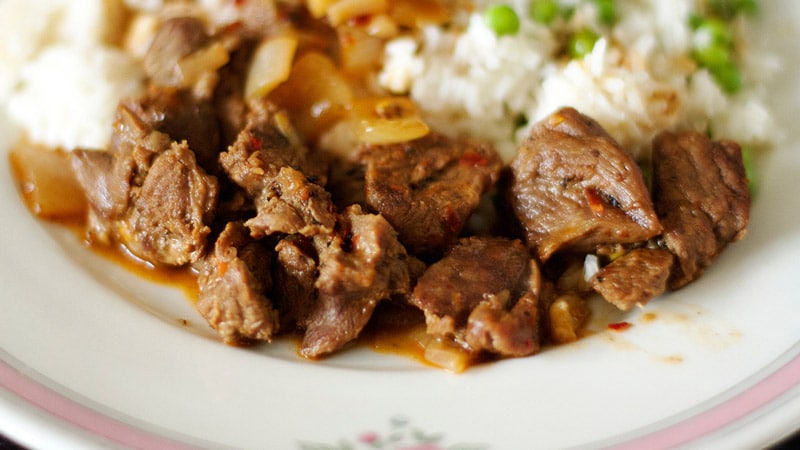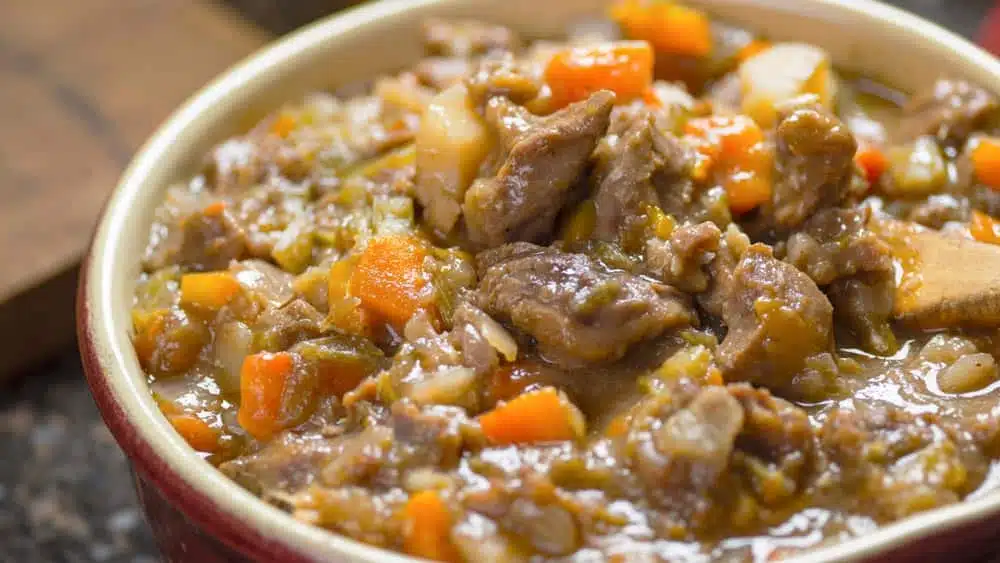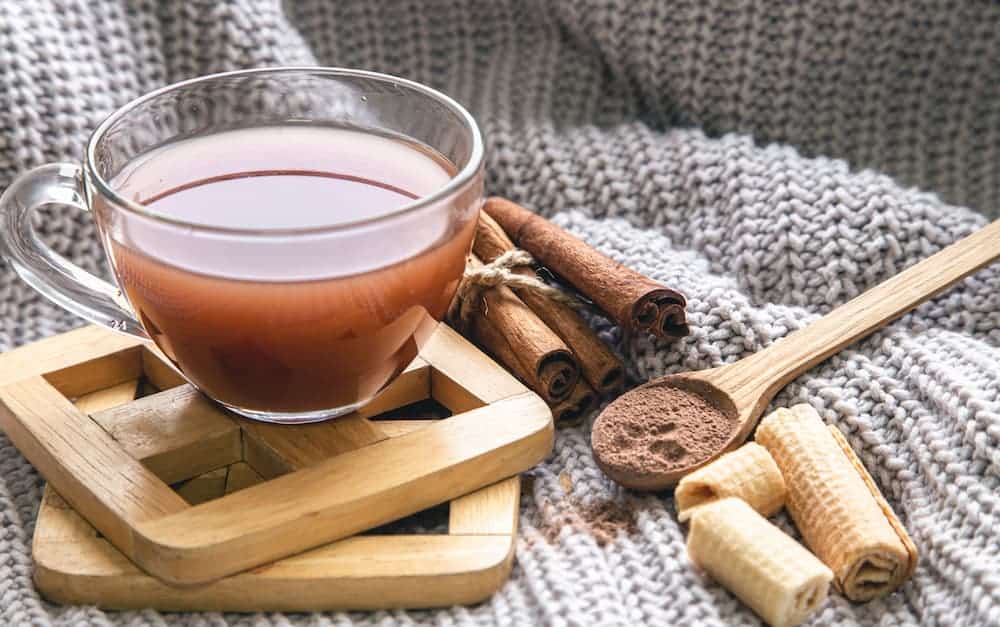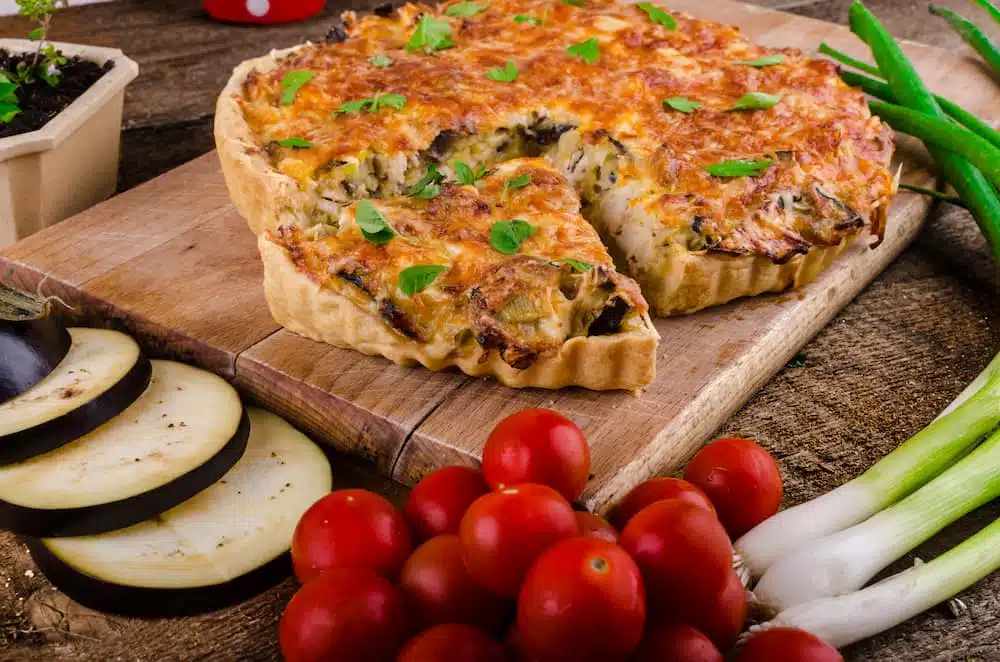Whether it's from grandma or mom... We already know we're talking about a homemade recipe full of love and flavor. That's right, dear followers of Paulina Cocina, and today is no exception. Lamb stew is a sublime preparation eaten in homes around the world. Lamb stew has its roots in traditional, home-cooked cuisine, where people sought to use cheaper and less tender cuts of lamb. Lamb stew is a more general term that refers to any preparation in which lamb is cooked in a stew or casserole. There can be many variations of lamb stew in different ways.
Although some meats are more commonly consumed today, lamb is still present at celebrations or for grilling meats with long cooking times. But we strongly recommend making this stewed lamb at home. And as always, let us know later.
Content table
Stewed lamb, a classic present in homes
Lamb stew is a traditional and comforting dish enjoyed in many cultures around the world. This dish is prepared using lamb, which is slowly cooked in a rich and flavorful sauce, along with a variety of complementary ingredients.
Every grandmother has her own special recipe for stewed lamb. These recipes are often passed down from generation to generation, and each grandmother adds her own personal touch. Some grandmothers may prefer to use specific cooking techniques, such as marinating the meat before cooking or adding unexpected ingredients to give it a unique flavor.
The tip to make our stewed lamb turn out spectacular
Lamb stew is cooked slowly to allow the meat to soften and the flavors to blend. Various cooking techniques are used, such as browning the meat in a large pot to achieve a rich color and flavor before adding other ingredients. Lamb in sauce is a delicious way to prepare stewed lamb. The meat is cut into chunks and browned in a large pot along with chopped onion and garlic. Other ingredients such as tomatoes, carrots, and meat broth are then added to create an aromatic sauce.
Spices and herbs such as rosemary, thyme, and cumin are added to enhance the flavors. The lamb is slow-cooked for a long time to tenderize the meat and blend the flavors perfectly.
How to accompany stewed lamb?
Braised lamb is a versatile option that can be served with a variety of sides, such as white rice , mashed potatoes , roasted vegetables, or fresh bread. Every spoonful of this flavorful dish reminds us of the importance of traditional recipes and the value of home cooking.
What is the best part of lamb to make stew?
Choosing the best lamb part for stewing can depend on personal preference and the specific recipe being used. However, some parts of lamb are especially popular for stews due to their flavor and texture. These are some of the most common parts used for stewing lamb:
- Lamb shoulder is a popular choice for stews due to its abundant flavor and fat content. This part is known for its tenderness and falls apart easily when cooked slowly.
- Lamb leg stew is also an excellent option. This part has less fat compared to the shoulder, but is still juicy and full of flavor. It can be cut into larger pieces for a more substantial stew. It can also be made into Roast Lamb Shoulder .
- Lamb ribs are another delicious option for stews. They have an intense flavor, and the meat falls easily off the bone after slow cooking. The lamb ribs add an additional flavor to the stew broth.
Lamb stew, a lamb stew full of Spanish flavors
Lamb stew is a traditional Spanish dish , especially popular in regions such as Castile and León, Aragon, and the Canary Islands. It is characterized as a lamb stew with ingredients such as onion, garlic, red and green peppers, tomatoes, potatoes, and spices such as bay leaves, paprika, and saffron.
White wine is typically used to cook caldereta, and sometimes meat broth is also added. It's a flavorful and comforting dish, with a thick, rich sauce. In other words, it's a recipe that uses lamb stew as a base, as a cooking method.

More about stewed lamb
Lamb stew has its roots in the traditional, home-style cooking of various cultures , where cheaper, less tender cuts of lamb were sought. Stewing allowed these tougher cuts to be cooked into delicious and savory dishes, using slow-cooking methods to tenderize the meat and develop its flavors.
Each culture has developed its own versions and variations of stewed lamb over time, adapting it to its regional ingredients and flavors. For example, in Spain, you'll find "cordero a la Riojana" or "caldereta de cordero" (lamb stew) , while in Morocco, the "cordero tagine" , featuring a distinctive blend of spices.
Guisado lamb recipe
Lamb stew can be cooked in a variety of ways , including in a traditional pot on the stovetop, in a slow cooker, or in a pressure cooker. Generally, lamb stew is cooked over low heat for a long period of time to allow the meat to tenderize and the flavors to blend. So be patient with this incredible recipe.
Yield : 4 portions
Preparation time : 2 hours 25 minutes
Ingredients
- 1 kg of lamb meat (preferably shoulder or leg), cut into pieces
- 2 tablespoons of olive oil
- 1 large onion, chopped
- 3 garlic cloves, chopped
- 2 carrots, peeled and cut into slices
- 2 tomatoes, peeled and chopped
- 200g green beans, cut into chunks
- 1 cup of meat broth
- 1 bay leaf
- 1 teaspoon of dry thyme
- Salt and pepper to taste
- 1/2 cup red wine
How to make stewed lamb
- In a large pot, heat the olive oil over medium heat. Add the lamb pieces and brown them on all sides until well sealed. Remove from the pot and set aside.
- In the same pot, add onion and garlic. Cook until golden and fragrant, stirring occasionally. Add the carrots and tomatoes and cook for a few minutes until the tomatoes soften slightly.
- Return the lamb pieces to the pot and mix well. Add the red wine and let it evaporate for a few minutes.
- Add the chopped green beans and cook for a few more minutes until slightly softened. Add the beef broth, bay leaf, and dried thyme. Season with salt and pepper to taste.
- Bring the stew to a boil and then reduce the heat to low. Cover the pot and simmer for approximately 2 hours, or until the meat is tender and flakes easily. Remove the bay leaf and serve alongside side dishes such as rice, mashed potatoes, or bread.





